Perfectly fit into a modern interior: features of different types of heating convectors
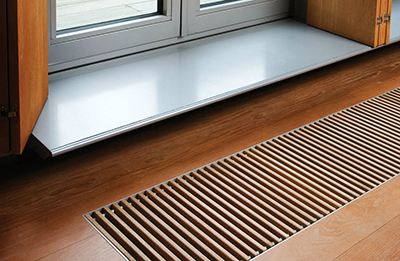
The operation of the convector is based on the physical properties of air. Warm air is much lighter than cold air, and therefore rises upward.
Cold air masses are located near the floor. Convectors are heating devices with holes for air flow penetration.
They have it built in very hot heating element, heating the cold air.
The air masses above cool down quickly and are replaced by warmer ones. Thus, there is constant movement of air in the room, which heats up quickly. Some models of these devices are equipped with fans that accelerate natural circulation and, accordingly, speed up the heating process.
Content
Classification of heating convectors
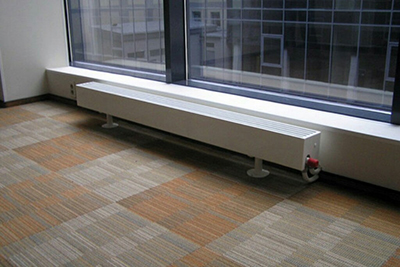
Depending on the individual characteristics of the devices, they can be classified by the method of installation, heating and air circulation. According to the installation method, the devices are divided into:
- floor;
- wall-mounted;
- mounted;
- built-in;
- universal.
By heating type:
- water;
- gas;
- electrical.
Air circulation can be natural and forced.
Equipment by type of installation
According to the type of installation, convectors are divided into: several types.
Floor standing
Floor heating convectors are convenient and mobile heating devices. If necessary they can be moved to any room or, if the power cord allows, take it outside the house, for example, to heat a covered veranda. The only drawback of such devices is precisely that network connection dependency. But the problem can be easily solved by using a regular extension cord.
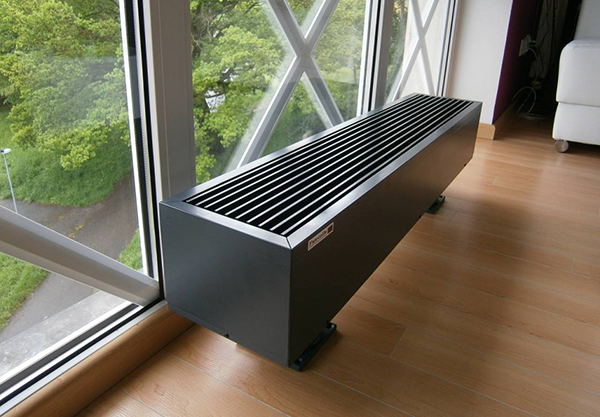
Photo 1. The floor heating convector is suitable for heating any room, including the veranda.
Wall mounted
Such heating devices are the most common among buyers. Their advantages are small thickness and attractive appearance. Wall mounted devices installed under windows, which creates reliable protection against the penetration of cold air from the street.
Built-in or hidden skirting boards

Such convectors are mounted in baseboards or in the floor anywhere in the room. This is their main advantage.
Devices used in large spaces, when wall or floor-mounted devices cannot cope with heating a large area.
The disadvantage is that such a hidden heating system needs to be planned at the design stage of the building.
Special niches are prepared in the floor for installing devices and a channel for pipelines. The appearance of such convectors does not spoil the interior, because it looks just like gratings in the floor.
Important! For greater efficiency of built-in appliances, these grilles should not be covered. carpets or furniture.
Some built-in skirting board devices are equipped with fans for faster heating of the room. For home use, small devices are suitable that mounted under the baseboard or into the body of built-in furniture.
Heating principle
According to the heating principle, the equipment is divided into water, electric, gas.
Water with copper or aluminum pipes
As the name suggests, the heating element in such devices is hot water. The body of the device is made of steel, and there is a lid on top. Depending on the model The lid can be removable or permanent.
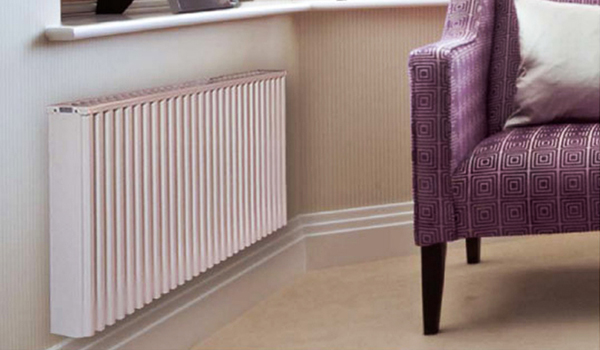
Photo 2. Water heating convector with a steel feeder in a room, installed on the wall.
The device is connected to the heating pipes using the inputs on the end or side. All modern convectors have air damper, allowing you to regulate the heating intensity.
Water circulates through copper or aluminum pipes, to which metal plates are attached, increasing the heated area. Another metal with good inertness and high thermal conductivity can also be used to manufacture the device.
When choosing such a device, pay attention to the gaps between the pipe and the plates. Even a millimeter distance significantly reduces thermal conductivity. The operating principle is based on the same the physical property of hot gas to rise upward. Water convectors can be additionally equipped with fans that increase the speed of air circulation.
Attention! When purchasing a water convector, it is important that the body and connecting hoses are made made of stainless steel. This material is not subject to corrosion.
Electric ducts
Such devices are very similar in appearance to conventional electric heaters that operate on the principle of radiation.
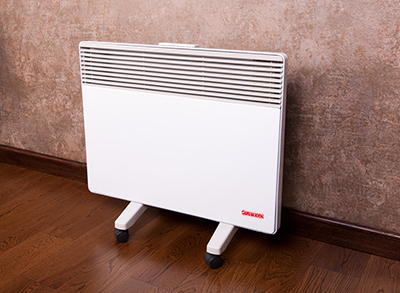
The only difference is that the body is flatter. Wall mounted electric convectors are mounted at a height of 15 cm from the floor. There are also universal channel devices that have legs.
They can be placed on the floor or mounted on a vertical surface.
The heating element in this case is heating element, located inside the case devices. The heating element itself is placed in a casing or inside a system of plates to increase the heating area.
The body of the device has openings at the top and bottom, through which air masses pass past the heating element. Such devices have a number of advantages. They are especially popular because complete silence, as electrical devices do not provide fans.
The main disadvantage of these devices is uneconomical, since they require a large amount of far from cheap electricity to operate. In addition, these devices are only good for heating small rooms or as additional heating.
Important! When choosing a device, you should calculate its power correctly and pay attention to the presence of protection against overheating. Otherwise, unpleasant situations are possible, including a fire.
Gas convector equipment
The main advantage of gas appliances is the ease of installation and operation. The devices do not require electricity to operate, and they operate silently. due to the absence of fans. Such devices operate as on liquefied (balloon), and on natural gas.

Photo 3. Gas heating convector indoors, is easy to operate and operates silently.
The principle of operation is based on natural air circulation. Air masses enter a closed chamber, heat up and exit into the room. The combustion products of the gas are removed to the street through the chimney.
The design of the chimney of gas convectors is such that it is safe to lead it out even through a wooden wall. This coaxial tube, enclosed in a circuit. The combustion products of the gas come out through the tube, and the outer circuit contains air. Therefore, the chimney does not heat up.
Attention! To install such convectors you will need help from specialists from the gas company.
Which convector is better to choose?
When choosing a device, you should consider your capabilities and needs. It is difficult to determine which is better.
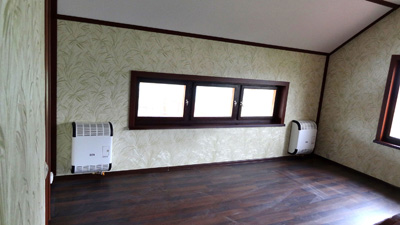
But there are also general recommendations when purchasing a device:
- The device should not burn oxygen.
- Device can be used in any premises.
- Convector should be easy to install and simple and safe to operate.
Air circulation
Natural air circulation is determined by physical laws. Devices with such properties are good because they can work autonomously. For their functioning only a heat source is required (hot water, gas or electricity).
Forced circulation of air masses is provided by the operation of the fan. The advantage of such devices is that the room warms up almost instantly. But they depend on the availability of electricity, which is required for the fan to operate.
Ceramic plate
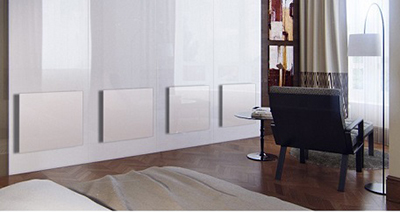
It is a flat device consisting of plates and a semiconductor heating element.
For uniform distribution throughout the room is used fan. Ceramic devices emit infrared waves, which are essential increase the efficiency of the device.
Such plate convectors are the safest in operation, as they are equipped with overheating protection and a timer to control the working process.
Device for a summer residence
When choosing a device for a summer residence, you should take into account the characteristics of the building. If the house does not have a water heating system and gas pipeline, then the choice should definitely be stopped on an electrical device.
If there is a gas pipeline at the dacha, it would be more appropriate to use gas convector, because in the countryside there are power outages. For the same reason, the device is not suitable for use with water circuit.
Useful video
The video shows how the process of installing a hidden floor heating convector takes place.
Additional functions
When choosing a convector pay attention and for the presence of:
- thermostat;
- electronic sensors;
- air damper.
They will make the operation of the device much easier and safer.








